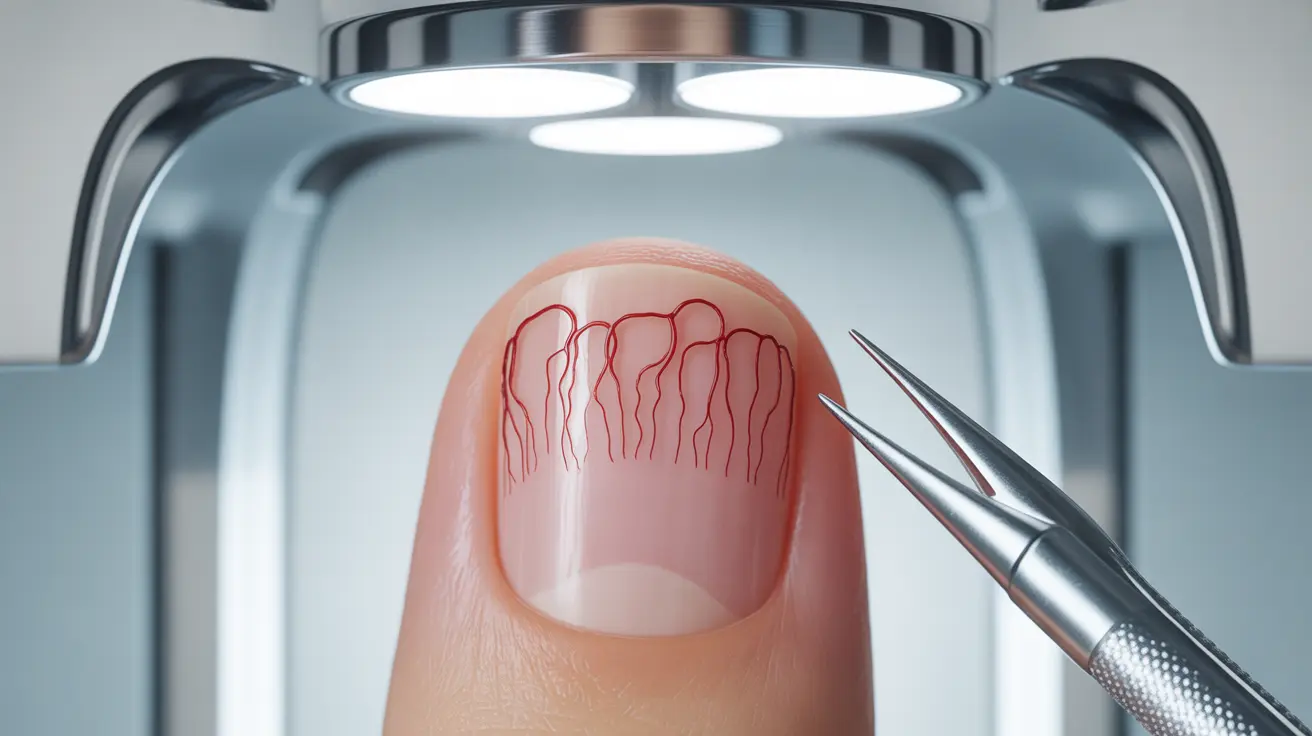Nailfold capillaroscopy is a specialized diagnostic procedure that allows healthcare providers to examine the tiny blood vessels (capillaries) under the fingernails. This non-invasive imaging technique has become an invaluable tool in diagnosing and monitoring various autoimmune and connective tissue disorders, providing crucial insights into vascular health that might otherwise go undetected.
By examining these microscopic vessels, medical professionals can identify patterns and abnormalities that may indicate the presence of specific conditions, particularly those affecting the body's connective tissues and blood vessels. This diagnostic approach has revolutionized the early detection and monitoring of several rheumatic diseases.
How Nailfold Capillaroscopy Works
During nailfold capillaroscopy, a specialized microscope equipped with high magnification capabilities is used to examine the capillary network visible through the skin at the base of the fingernail. A drop of oil is typically applied to enhance visibility, allowing healthcare providers to observe the size, shape, and arrangement of these tiny blood vessels in detail.
The procedure is completely painless and typically takes about 15-30 minutes to examine multiple fingers. The ring finger is often considered the most useful for examination due to its transparent skin and optimal visibility of the capillary network.
Clinical Applications and Significance
Nailfold capillaroscopy serves as a crucial diagnostic tool in rheumatology, particularly for:
- Early detection of systemic sclerosis
- Differentiation between primary and secondary Raynaud's phenomenon
- Monitoring disease progression in connective tissue disorders
- Assessment of vascular involvement in autoimmune conditions
Understanding Normal vs. Abnormal Findings
In healthy individuals, capillaries appear as hairpin-shaped loops arranged in a regular pattern. Abnormal findings may include:
- Enlarged or dilated capillaries
- Irregular distribution patterns
- Missing capillaries (dropout)
- Branched or bushy capillaries
- Hemorrhages or micro-bleeding
Role in Disease Monitoring
Beyond initial diagnosis, nailfold capillaroscopy plays a vital role in monitoring disease progression and treatment response. Regular examinations can help healthcare providers track changes in vascular patterns over time, allowing for timely adjustments in treatment strategies when necessary.
Frequently Asked Questions
What is nailfold capillaroscopy and how does it help diagnose autoimmune diseases? Nailfold capillaroscopy is a microscopic examination of small blood vessels under the fingernails. It helps diagnose autoimmune diseases by revealing characteristic patterns of capillary changes that are specific to certain conditions, particularly in systemic sclerosis and other connective tissue diseases.
How is nailfold capillaroscopy performed and is the procedure painful? The procedure involves placing a drop of oil on the nailfold area and examining it under a specialized microscope. It is completely painless and non-invasive, typically taking 15-30 minutes to examine multiple fingers.
What differences does nailfold capillaroscopy show between primary and secondary Raynaud's phenomenon? In primary Raynaud's, capillary patterns usually appear normal or show minimal changes. Secondary Raynaud's typically shows significant abnormalities such as enlarged capillaries, capillary dropout, and irregular distribution patterns, indicating an underlying connective tissue disease.
What are the typical nailfold capillaroscopy findings in systemic sclerosis (scleroderma)? Systemic sclerosis typically shows a characteristic "scleroderma pattern" including giant capillaries, extensive capillary loss, hemorrhages, and abnormal capillary architecture. These changes often appear early in the disease process.
Can nailfold capillaroscopy detect other connective tissue diseases besides systemic sclerosis and Raynaud's phenomenon? Yes, nailfold capillaroscopy can detect vascular changes associated with other connective tissue diseases such as dermatomyositis, lupus, and mixed connective tissue disease, though the patterns may be less specific than those seen in systemic sclerosis.
Understanding the capabilities and applications of nailfold capillaroscopy continues to expand, making it an increasingly valuable tool in rheumatology and autoimmune disease management. This simple yet powerful diagnostic technique provides crucial insights that help guide treatment decisions and improve patient outcomes.




